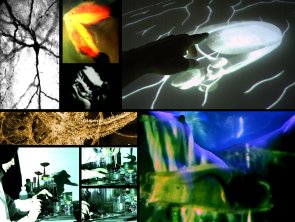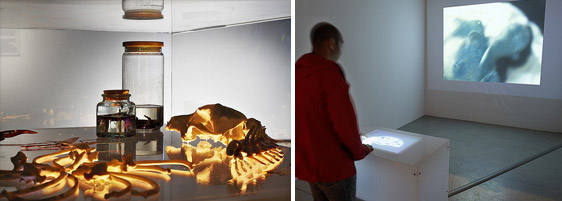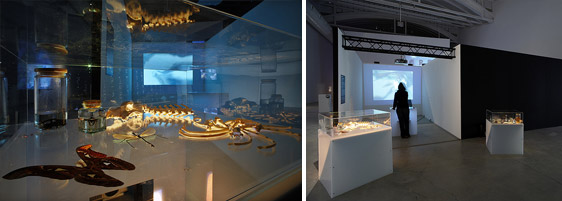

Reflecting JCC Brain Research II, 2007
Simó, Agueda
Virtual Reality interactive installation
What is the difference between a normal and an abnormal mind?
A balanced mix of rational thought and emotion guides our social behaviour, but what happens when the emotions prevail over good judgement? Or when reason is devoid of emotional content?
The nervous system, neuronal circuits, specialized areas in the brain and consciousness are all areas for study by humans, who like to dissect themselves to understand their representation of the world and interaction with it: their behaviour.

Neurons, synapses, maps of brain function are scientific facts that seem quite familiar to us today but were not discovered until the late 19th and early 20th century. They emerged in part from discussions among reticularists, neuronists, phrenologists and others who studied the brain and human behaviour.
In the 20th century, breakthroughs in research in the neurosciences and psychopharmacology mean that a growing number of people are being treated with antidepressant medication and stimulants after being diagnosed with mental illnesses. The treatment of serious behavioural illness with a prefrontal leucotomy or lobotomy has been replaced by what is known as a chemical lobotomy, although brain surgery is still performed in extreme cases, such as bilateral cingulotomy for severe bipolar disorder.

This work offers a reflection on the prejudices that colour our view of mental illness and the person who suffers from it, as well as medical-pharmacological interventions to normalize human behaviour and solve social conflicts.
In JCC the user explores the mind of a person whose emotions disturb his reasoning. Provided with a map of JCC’s brain, the user establishes connections among his perceptions, thoughts, memories and the external world. The user explores his mind and consciousness, his feelings. At the same time, the user investigates brain function at different levels, some scientific and others more in the realm of the fantastic.
